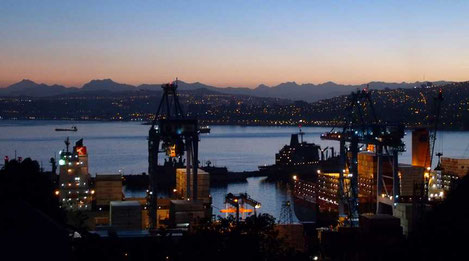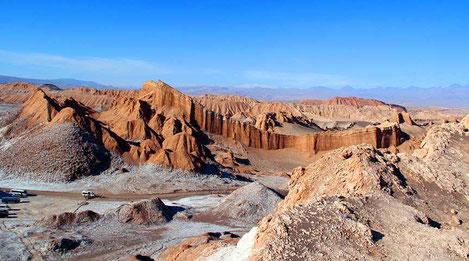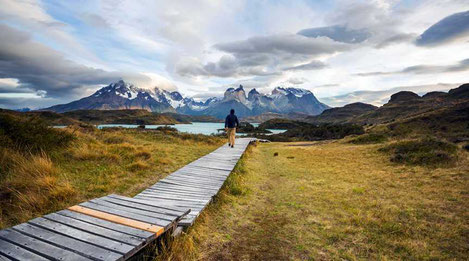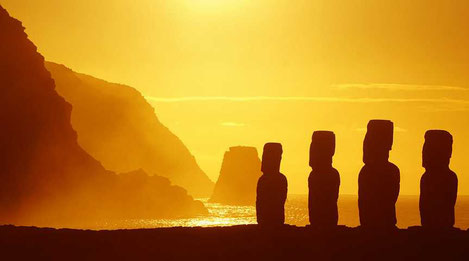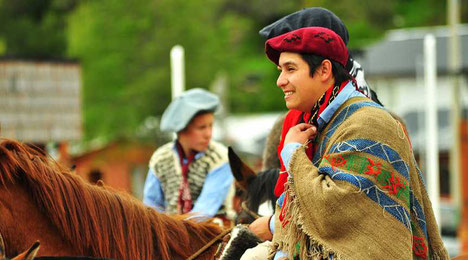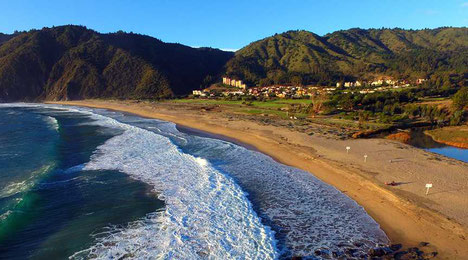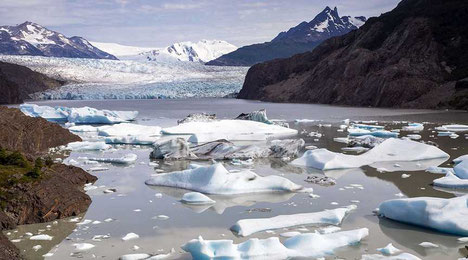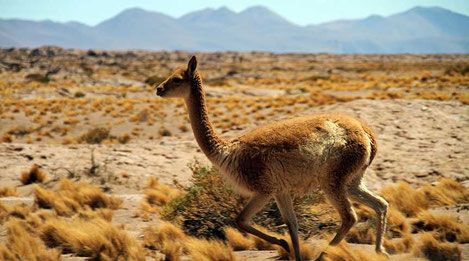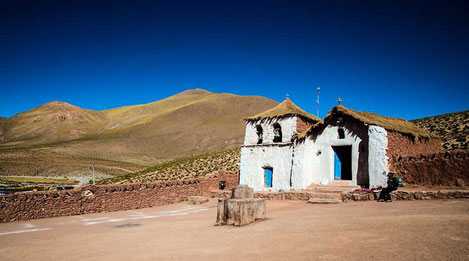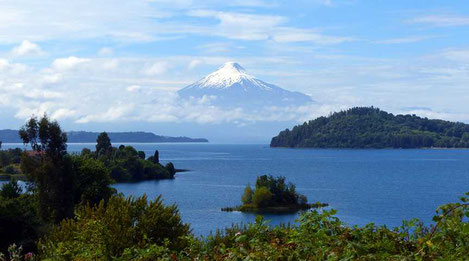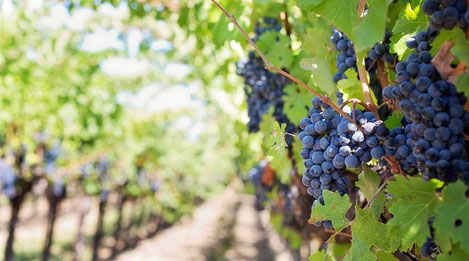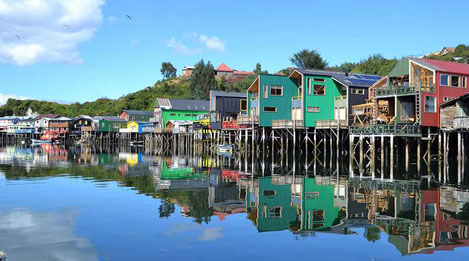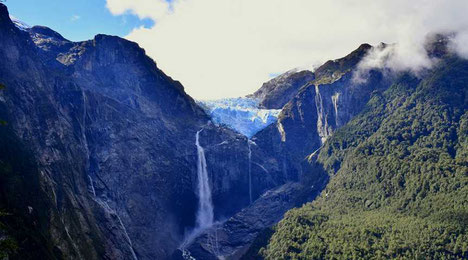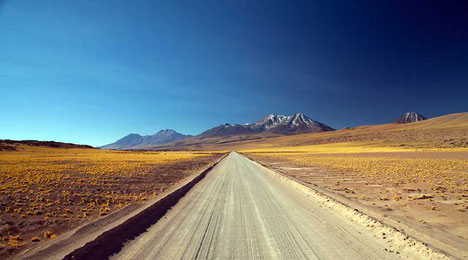Travel Packages for Round Trips through Chile
Discover Chile from the Atacama Desert to Patagonia. We are Chile experts and organize tailor-made round trips through Chile and bordering regions.
The longest country in the world stretches for over 4,200 kilometers. In the east of Chile, the mighty Andes rise up. Among the snow-covered peaks are 2,085 volcanoes. In turn, on the western side of the country, the powerful waves of the Pacific Ocean are crashing. The coast of Chile is adorned with hidden fishing villages, chic beaches and mystical islands. In the north, the silent Atacama Desert sets the rhythm. With its encrusted salt lakes and bubbling geysers, it seems like the terrain of another planet. Urban life takes place mainly in central Chile. Between the cities, rows of grapevines stretch endlessly across the green hills. Meanwhile, in the south, you sense the pure wilderness of the country. Shimmering lakes are surrounded by dense rainforest. And the ice of gigantic glaciers breaks clashingly. All this in one country – Chile is full of extremes.
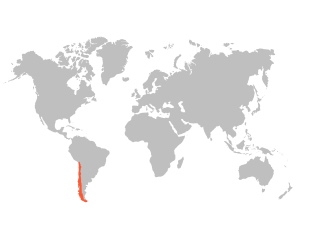

Quick Request
Our Regular Travel Packages
With our regular travel programs you travel 2, 3 or 4 weeks through Chile. We customize all round trips according to your ideas.
The Best in a Nutshell
Chile Compact
Contrasts of the Country in 2 Weeks
|
|
Individual journey; date and itinerary fully customizable |
|
|
Atacama Desert, Central Chile, Lake Region, southern Patagonia |
|
|
National flights, transfer connections |
Chile at a Glance
Chile Classic
Highlights of the Country in 3 Weeks
|
|
Individual journey; date and itinerary fully customizable |
|
|
Atacama Desert, Little North, Central Chile, Araucania, Lake Region, southern Patagonia |
|
|
National flights, transfer connections, bus connection |
Our Suggestion to Enter
Chile Intensive
Essence of the Country in 3 Weeks
|
|
Individual journey; date and itinerary fully customizable |
|
|
Atacama Desert, Central Chile, Lake Region, southern Patagonia |
|
|
National flights, transfer connections |
Chiles Contrasts with Easter Island
Chile in all its Facets
The Faces of the Country in 4 Weeks
|
|
Individual journey; date and itinerary fully customizable |
|
|
Atacama Desert, Little North, Easter Island / Rapa Nui, Central Chile, Araucania, Lake Region, southern Patagonia |
|
|
National flights, transfer connections, bus connection |
Hidden Natural Wonders of Chile
Chile Authentic
Rough Diamonds of the Country in 4 Weeks
|
|
Individual journey; date and itinerary fully customizable |
|
|
Atacama Desert, Little North, Central Chile, Lake Region, Carretera Austral / northern Patagonia |
|
|
National flights, transfer connections, rental car |
Our Tip for the Curious
Central Chile Vital
The Heart of the Country in 2 Weeks (with Rental Car)
|
|
Individual journey; date and itinerary fully customizable |
|
|
Central Chile |
|
|
Rental car |
Torres del Paine Hike
Patagonia Active
Southern and Central Chile in 2 Weeks (with Multi-Day Hike)
|
|
Individual journey; date and itinerary fully customizable |
|
|
Central Chile, southern Patagonia with Torres del Paine National Park |
|
|
National flights, transfer connections, bus connections |
Andean Highlands Tour
Chile Up Close
Altiplano and Lake Region in 3 Weeks (with Multi-Day Tour)
|
|
Individual journey with private multi-day tour; date and itinerary fully customizable |
|
|
Atacama Desert and Altiplano of the Great North, Central Chile, Lake Region |
|
|
National flights, transfer connections, private excursion |
Spotlights of Patagonia
Patagonia without Borders
Rough South of Chile and Argentina in 2 Weeks
|
|
Individual journey; date and itinerary fully customizable |
|
|
Santiago, southern Patagonia of Chile and Argentina, Buenos Aires |
|
|
National flights, transfer connections, bus connection |
Atacama on Your Own
Focus Atacama
Northern Chile in 3 Weeks (with Rental Car)
|
|
Individual journey; date and itinerary fully customizable |
|
|
Atacama Desert, Little North, Central Chile |
|
|
National flights, transfer connections, rental car |
Engulfed by Chilean Nature
Chile Pure
Secluded Nature of the Country in 3 Weeks (with Rental Car)
|
|
Individual journey; date and itinerary fully customizable |
|
|
Atacama Desert, Central Chile, Lake Region, Carretera Austral / northern Patagonia |
|
|
National flights, transfer connections, rental car |
Wine, Volcanoes and Lakes
Southern Chile Idyllic
Little South of Chile in 3 Weeks (with Rental Car)
|
|
Individual journey; date and itinerary fully customizable |
|
|
Central Chile, wine region, Araucania, Lake Region |
|
|
National flight, transfer connections, rental car |
Island, Lava Fields and Desert
Chile Mystical
Little South of Chile and Iquique in 3 Weeks (with Rental Car)
|
|
Individual journey; date and itinerary fully customizable |
|
|
Atacama Desert, Central Chile, Araucania, Lake Region, Chiloé |
|
|
National flights, transfer connections, rental car |
Loneliness of Patagonia
Carretera Austral Fundamental
Patagonia in 3 Weeks (with Rental Car)
|
|
Individual journey; date and itinerary fully customizable |
|
|
Central Chile, Lake Region, Carretera Austral / northern Patagonia, southern Patagonia |
|
|
National flights, transfer connections, rental car, car ferry cruise |
Motorhome Trip in the Atacama
Atacama Independent
Northern Chile in 2 Weeks (with Motorhome)
|
|
Individual journey; date and itinerary fully customizable |
|
|
Atacama Desert and Altiplano of the Great North, Central Chile |
|
|
National flights, transfer connections, motorhome |
Exclusive Nature Panoramas
Chile Deluxe
Tierra del Fuego Cruise and Easter Island in 3 Weeks
|
|
Individual journey with cruise; date and itinerary partly customizable |
|
|
Easter Island / Rapa Nui, Central Chile, southern Patagonia of Chile and Argentina, Tierra del Fuego |
|
|
National flights, transfer connections |
*Regular price; seasonal special rates available on request
Not found the right trip yet?
Write us your travel wishes.
We tailor your journey through Chile.

With Chile Central you compensate the ecological footprint of your Chile trip. We support the reforestation in Chile and other sustainability initiatives with your contribution.
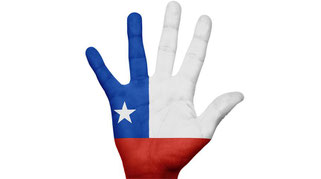
We are engaged in social projects in Chile. With a trip provided by us, you help a non-profit institution in its work with disadvantaged children of Santiago.
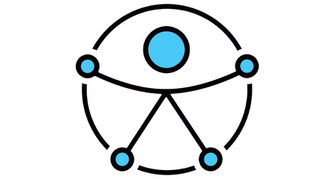
With its local conditions, Chile is not free of obstacles. We are committed to accessible tourism so that you, with or without a handicap, can experience your trip as personalized as possible.
Travel Tips for your Journey through Chile
Do I need a visa for Chile?
Visa and Entry Requirements for Chile
The entry requirements for Chile depend on the nationality. Many travelers do not need a visa for a stay up to 90 days. You can find more information here.
When entering Chile, you will receive a tourist card. The document must be submitted again when leaving the country. If the inconspicuous slip cannot be presented, penalty fees and travel delays may result at the moment of border crossing. Since September 2021, it has also been possible to apply for a reissue digitally. The PDI provides an online form for this purpose.
Chilean regulations for traveling with underage children are very strict, especially for children with Chilean or dual nationality and when accompanied by only one parent. Under certain circumstances, birth certificates and a notarized travel permit must be presented.
Please also note the special entry requirements of Rapa Nui.
Furthermore, the Chilean customs authorities require an affidavit for the products carried on entry. As part of the ongoing digitalization, this should be done using the online form. We recommend completing the digital form 48 hours before crossing the border to Chile and saving the receipt offline.
For trips crossing into Argentina, travel health insurance has been mandatory since July 1, 2025. It must cover, among other things, medical treatment and repatriation. Proof of coverage must be carried in English or Spanish.



Do I need vaccinations for a trip to Chile?
Health and Medical Care in Chile
Health risk factors in Chile do not differ significantly from those like in Europe. With some exceptions, medical care is also comparable in the country's larger cities. Required
vaccinations depend on the origin of the traveler. Some people are advised to be vaccinated against dengue infection, according to the travel region (especially Easter Island / Rapa Nui) and
duration of their stay.
In central and southern Chile, drinking tap water is generally safe for most people, but travelers are generally advised to drink mineral water as a preventive measure.
In addition to geographical risks such as earthquakes, altitude sickness in particular must be taken into account during stays in the Andes without prior
altitude adjustment.
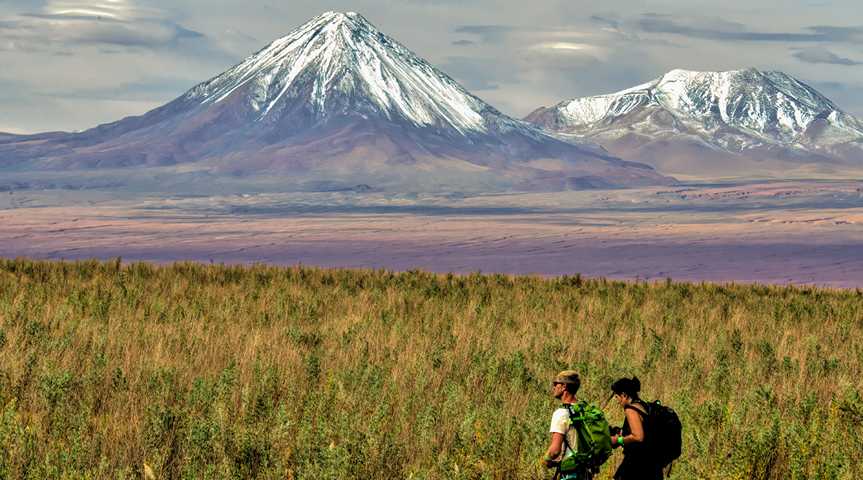
What time of year is best for a journey through Chile?
Weather and Travel Season
From a climatic point of view, the months November to March are generally very suitable for traveling through Chile. This is the local summer season, which means that the weather
conditions in the rough south and in the mediterranean center are warmer and less rainy. The north of the country near the coast is mild to warm during the whole year. At the same time,
Chilean summer time is the main season, which means that some travel destinations are sometimes very busy.
From April to September is the colder season. During this time, more frequent rainfall, low temperatures and sometimes snow can be expected in central and southern Chile and in more mountainous
regions. It can happen that the weather conditions restrict the visit of places of interest and group tours have to be cancelled due to missing participants. At the same time, travelers get very
authentic impressions in the low season with the reduced number of visitors and experience the fascinating nature of the country from a very special point of view.
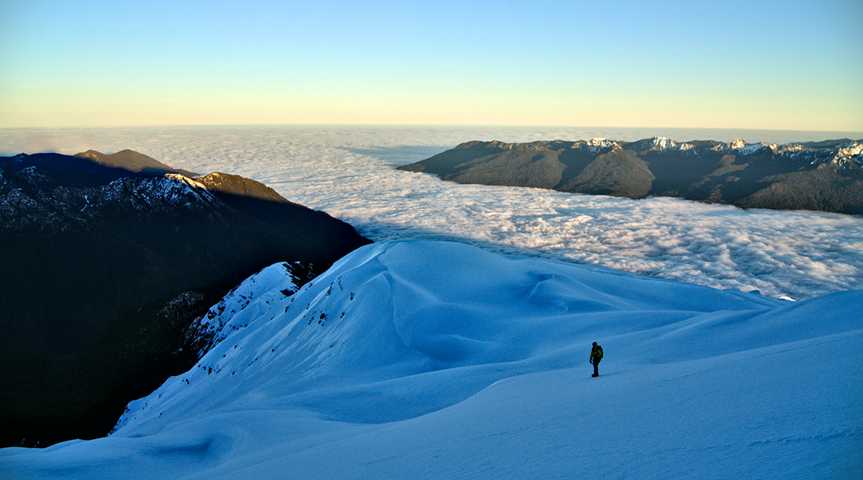
Can I communicate in English in Chile?
Language and Communication in Chile
Especially the young generation in Chile is becoming increasingly familiar with the English language. And English is spoken in most hotels and on guided tours. Nevertheless, in
many places it can be noticed that Chile with its geographical location is exclusively surrounded by other Spanish-speaking countries. Therefore, the language skills in Chilean society are
limited.
The attempt of travelers to communicate in Spanish quickly breaks the ice and thus, basic information can be transmitted even without a common language. But for a deeper insight into the culture
of the country and for a more intensive exchange with the local people, a knowledge of Spanish is undoubtedly very helpful.
If you would like to take part in a language course during your round trip through Chile, we are happy to assist you with the organization.
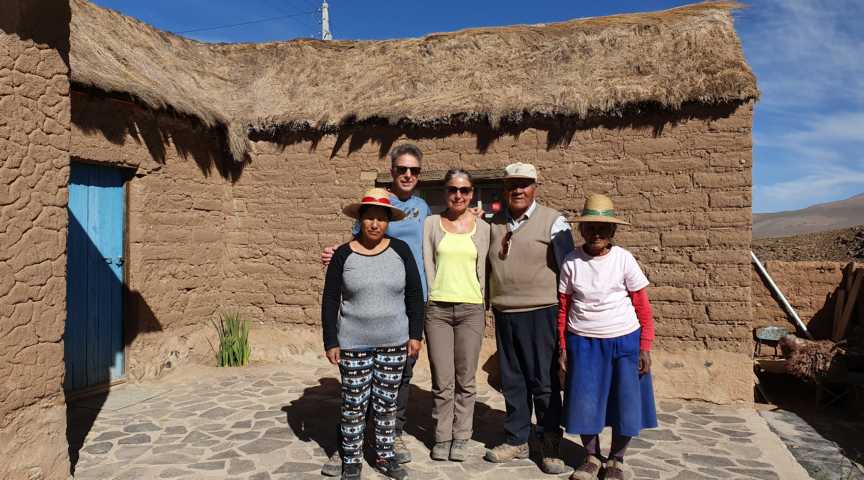
Do I need to exchange money before my trip to Chile?
Money and Payment in Chile
Many shops in urban areas accept payments by credit card. At the same time, it is advisable to start your journey with some money in the local currency and also to carry sufficient cash during the trip. For stays in neighboring regions of Argentina, you should have US$ on hand as well. Especially in larger cities and areas with good tourist facilities, including Santiago Airport, you can exchange money on site or withdraw directly from ATMs. Depending on the bank, there is usually a fee of at least €7.00 per withdrawal (with a maximum of approx. €300.00). In addition, fees may be charged by the local bank. Some banks may offer their customers to withdraw money from selected foreign ATMs without any fee. In Chile, this is currently almost exclusively possible free of charge at Scotiabank machines. Payment in US$ is accepted by some merchants, but it is not a common method of payment. Park admissions, on the other hand, are usually payable in cash in the local currency.



Is Chile an expensive destination?
Prices in Chile
In relation to other destinations in South America, Chile is a very expensive country to visit. Compared to central Europe, the costs for restaurant visits, fuel and personal services are a little lower. Food in supermarkets, medicines or imported items such as electrical goods are sometimes considerably more expensive than in Europe. From a financial but also from a touristic point of view, shopping in public markets is recommendable. Public local and long-distance transport is certainly reasonable for individual trips. However, since there is usually no special frequent traveler rate, regular use of public transport is quite expensive. Moreover, the respective tolls for journeys with a rental car or motorhome must be taken into account.
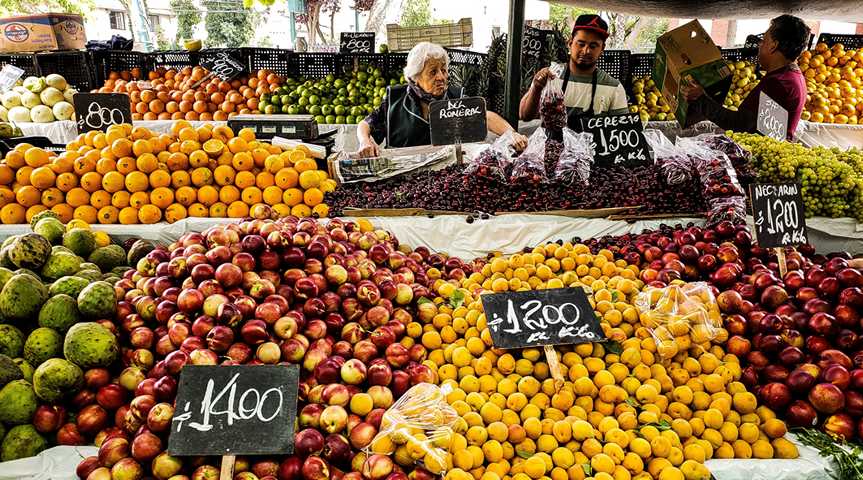
How much do you tip in Chile?
Tipping in Chile
The expected tip for cafés and restaurants is 10%. Please note that nowadays many café and restaurant operators have already added the 10% tip. This is noted on the respective
invoice. The payment of the corresponding tip is voluntary, you can agree, disagree or adjust the suggestion. For tours with very dedicated tour guides, a tip of about €5 is recommended. The room
service and driving services can be given €1 to €2.
Moreover, street musicians, comedians or packing assistants in the supermarket finance themselves often exclusively by noncommittal tips. For them, you should always have 500
Pesos (about €0.60) ready in your pocket.
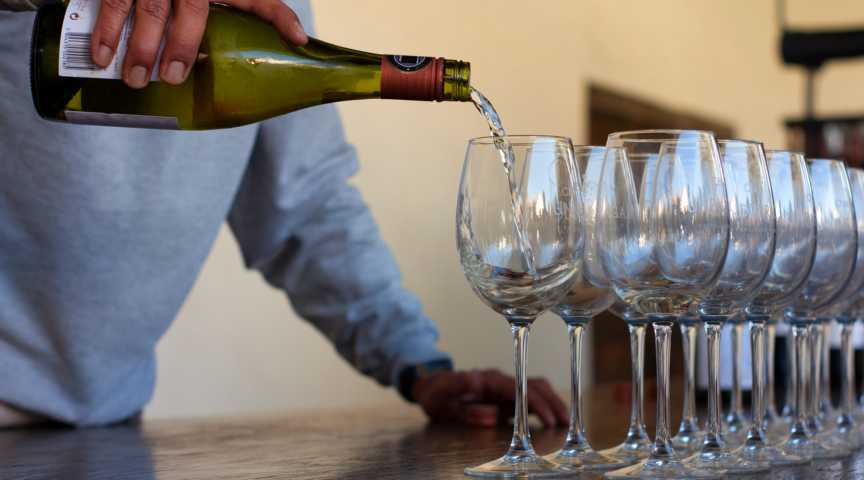
Do I need to book tickets for national parks in Chile in advance?
Tickets for National Parks in Chile
Like many countries around the world, Chile used the coronavirus pandemic as an opportunity to advance digitization in various areas, including access to its national
parks. Especially in highly popular protected areas like Torres del Paine, digital booking speeds up entry, leaving more time for what truly matters: enjoying nature.
However, digital ticket booking is not without its drawbacks. Limitations of ticket platforms regarding multilingual support and payment options are unfortunately common. Some reserves require
mandatory advance reservations, while others do not offer pre-sale tickets at all. Additionally, the limited availability of on-site ticket sales reduces spontaneity, particularly for self-drive
travelers in Chile. In some regions, local ticket machines are available as an alternative, but these are exceptions.
The majority of Chile’s nature reserves are managed by the national forestry agency, CONAF, including parks like Conguillío, Queulat, and Torres del Paine, which
require tickets to be booked in advance via a designated portal.
The reserves near San Pedro de Atacama are managed by the local Indigenous community, and entrance fees are typically paid directly at the gate.
In certain cases, tickets should be booked officially in advance: Valle de la Luna / Moon Valley; Lagunas Miscanti y Miñiques / Lagunas Altiplánicas / Salar de Aguas Calientes / Piedras Rojas; Laguna Cejar; Termas de Puritama; Laguna Chaxa / Valle de Jere / Salar de Tara
On Easter Island / Rapa Nui, the national park is also managed by an Indigenous communal authority, which provides its own booking platform.
Meanwhile, tickets for national parks on the Argentine side are sold through a government portal.
To avoid conflicts or inconveniences, we recommend booking entrance tickets online in advance. For multi-day visits, such as trekking tours in Torres del Paine, ticket validity
can often be set for several days. Given the limited language options of many platforms, we suggest using browser extensions like DeepL or Google Translate for translations.



What should I take with me on a trip to Chile?
Luggage for Chile Trips
What you should take with you on your trip depends very much on which region of Chile you visit at what time of the year and what the focus of your trip is. In general, we recommend to carry the following items in addition to the usual travel accessories:
- Warm and rainproof functional clothing
- Solid footwear
- Sandals
- Swimwear
- Cap
- Sun protection and sun cream with factor 30 or higher
- Mosquito repellent
- Daypack
- Mobile phone
- Digital copies of your passport (e.g. in your email box)
- First-aid kit
- Socket adapter
- Driver's license
- Credit card (debit cards are usually not accepted for car rental)
- Money in local currency for the first days
Flights within Chile are subject to similar baggage conditions as intercontinental flights. Generally, you can check in one piece of baggage weighing 23 kg per person. The limit for hand luggage is usually 8 kg.
In the event of delays in forwarding luggage, it is advisable to have relevant items for the first and second day of travel in your hand luggage.


Is my European driving license sufficient for my self drive trip by rental car in Chile?
Driving License in Chile
We strongly recommend carrying an international driver's license. Although the European driving license is generally accepted when the rental car is picked up as well as during police controls, it is particularly useful to be able to show an international driving license in the event of damage. This in turn is only valid in connection with the national driver's license.


Do I have to station my motorhome in campgrounds in Chile?
Travel by Motorhome in Chile
Chile is well suited for motorhome trips due to its diverse nature and remote places of interest. At the same time, the country has a very limited camping culture. Staying in the open countryside and far from urban areas is a good option when traveling by motorhome. This is also tolerated by the authorities.
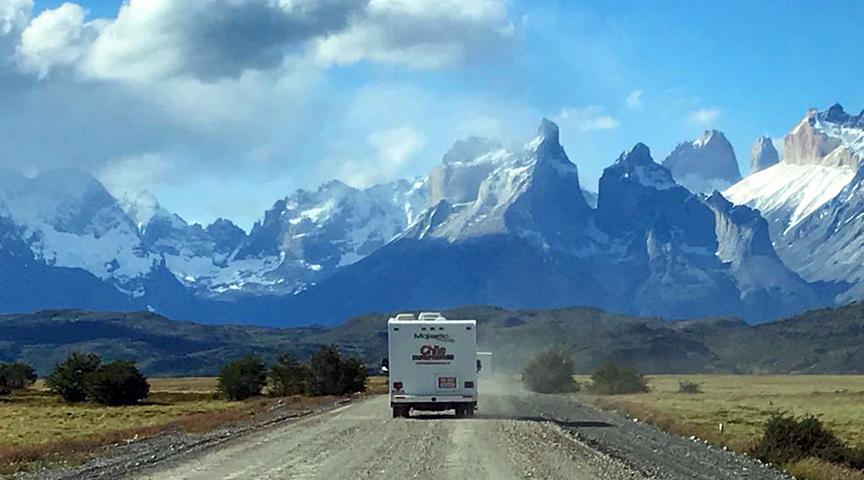
Can I use a Chilean SIM card in my cell phone?
Cell Phone Usage in Chile
Using your own cell phone on vacation in Chile offers many advantages. Whether as a GPS device on the road, as a digital entrance ticket to National Parks or, of course, for communication back
home, it has become hard to imagine traveling without a smartphone. You can use your cell phone in four ways on your trip through Chile:
1. Using your cell phone via WLAN
You can use public Wi-Fi connections in your hotel, in cafés or at airports to make internet calls via providers such as WhatsApp or Skype and access to all other online
services. Phone calls and messaging services without an Internet connection are not possible.
2. Using your cell phone via roaming
Use your cell phone via the roaming function and access to local networks. Phone calls, text messages and data usage are billed as international services and incur corresponding
costs.
3. Using the cell phone with a Chilean SIM card
You can use your smartphone with a Chilean prepaid card. You obtain these easily and cheaply in many small local stores. Then, you can book data packages for the mobile internet
and make local phone calls. This requires that your phone is unlocked.
In Chile, Entel, Movistar, Claro, and Wom are among the main mobile network providers. Since February 2025, identity verification has been required for SIM activation to prevent the misuse of prepaid cards. Claro is considered relatively less restrictive in this process, especially for individuals without a permanent residence in Chile.
The use of a non-Chilean cell phone with a Chilean SIM card is tolerated for 90 days. Bypassing a subsequent block involves a rather bureaucratic phone registration process, which consists of presenting ID, proof of purchase of the phone and the IMEI code. Registration takes a few days and is particularly recommended for people who are in Chile for long periods or frequently. Further information can be found here.
4. Using a Mobile Phone with an eSIM
International eSIM options offer an additional way to access mobile internet while traveling. To use an eSIM, the device must be unlocked and technically compatible. Reliable
providers include Airalo, Nomad, Holafly, and SimCorner. Please note that these services do not provide a Chilean phone number.



* The travel tips listed here are based on our country-specific knowledge and experience. However, they are not legally binding.
More travel tips for your Chile trip can be found here.


